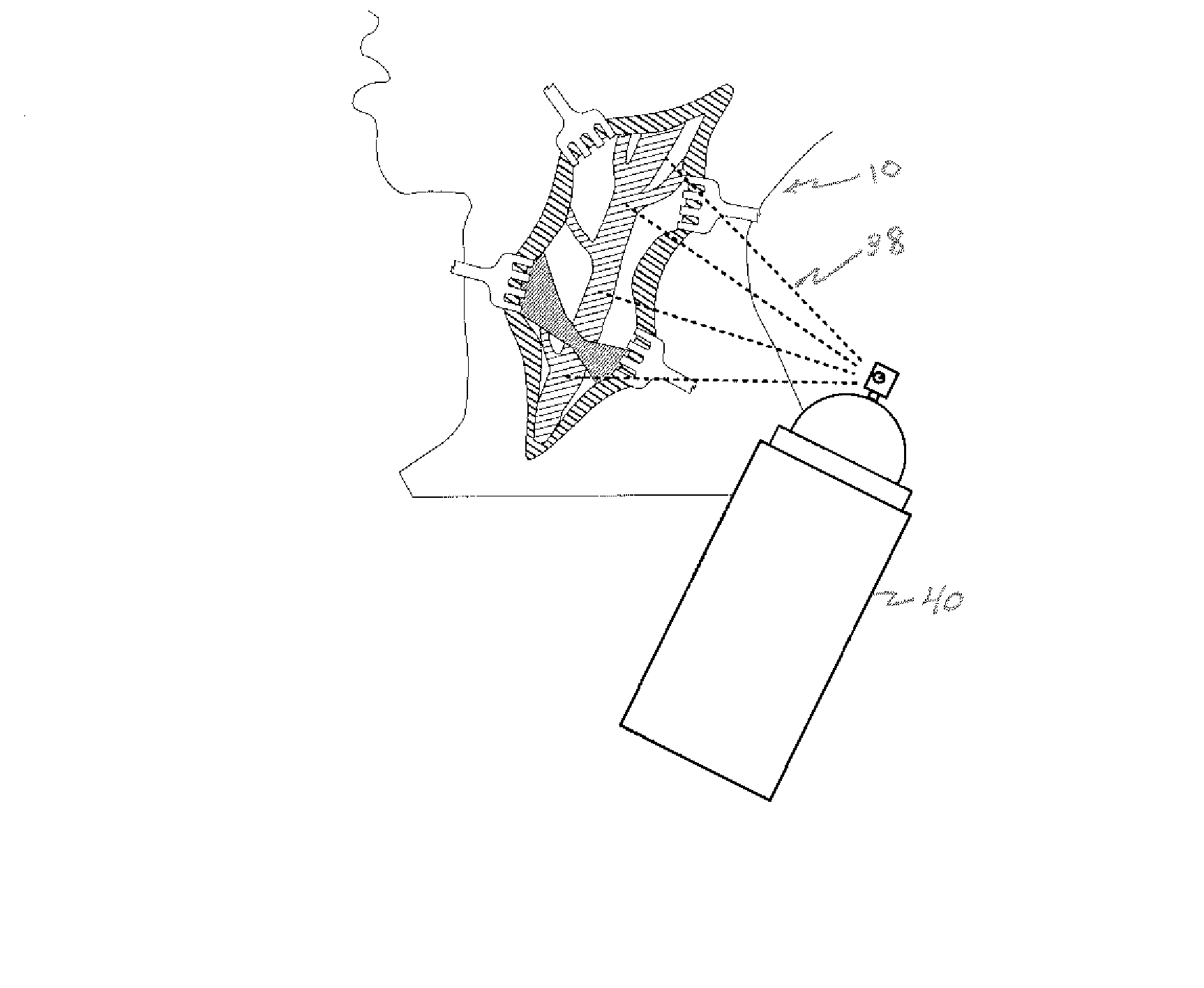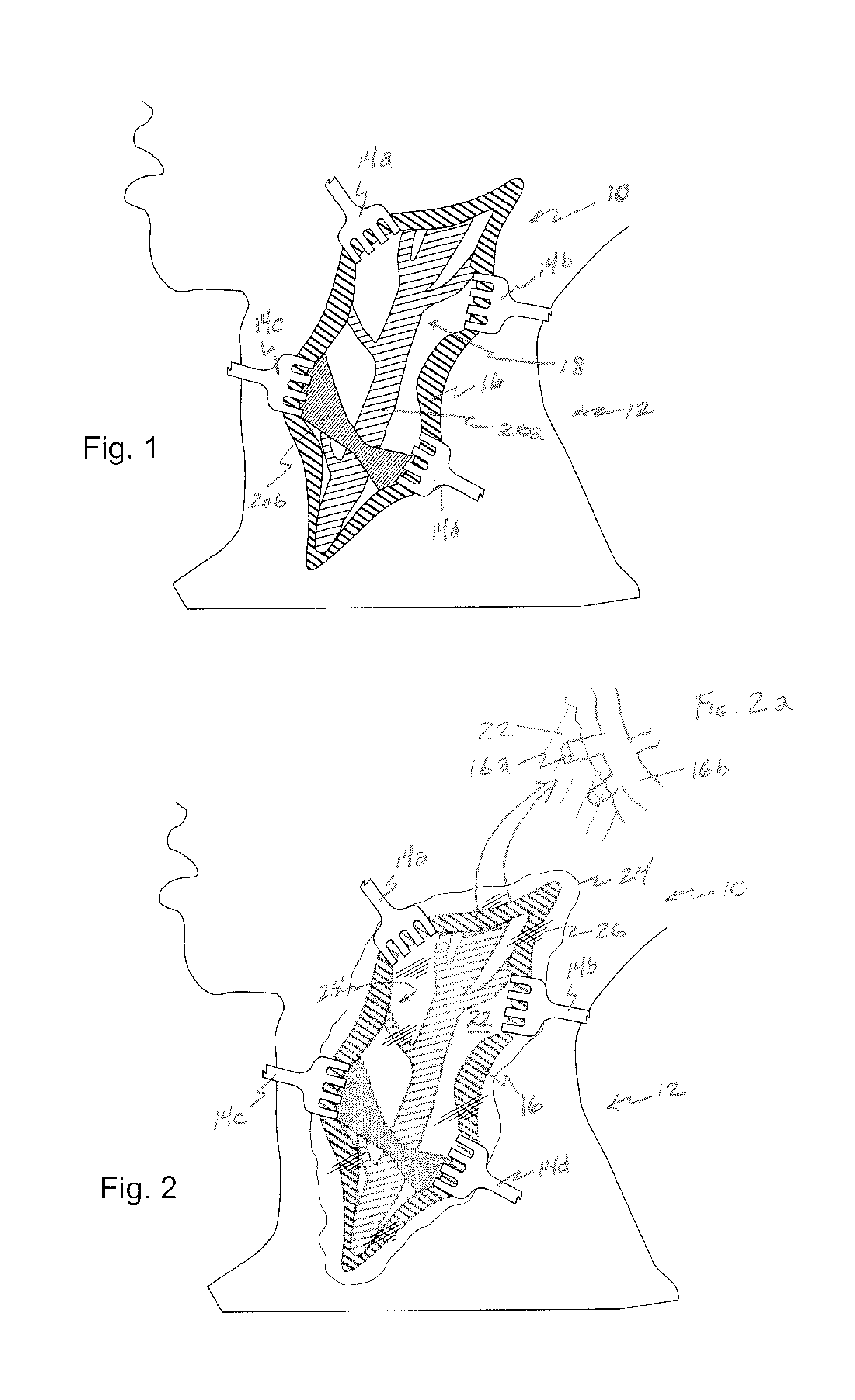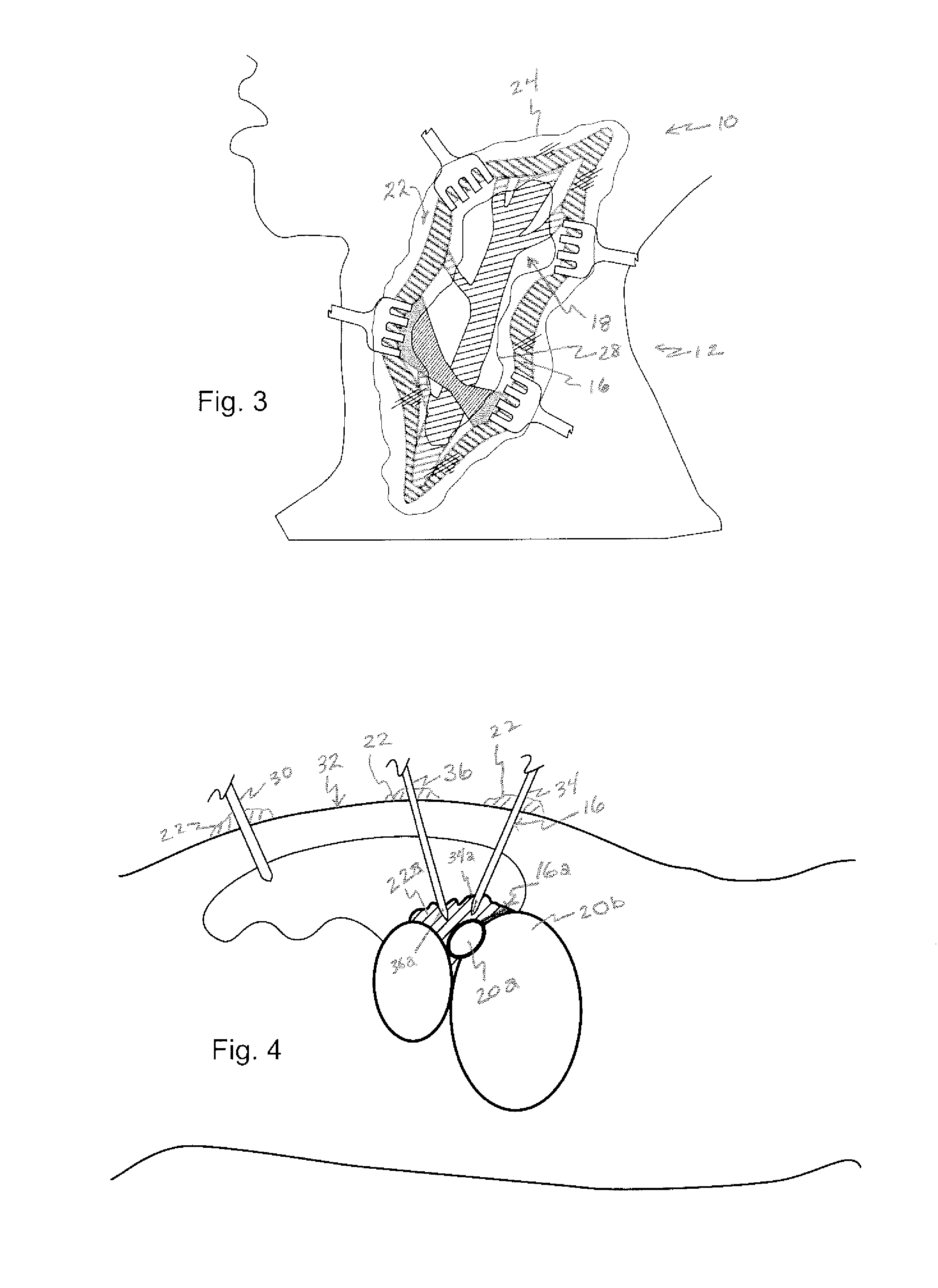Method of inhibiting the formation of adhesions and scar tissue and reducing blood loss
a technology which is applied in the field of inhibiting the formation of adhesions and scar tissue and reducing blood loss, can solve the problems of not being able to cover the entire bleeding portion of the operating field, not being able to adapt to surgery, and moore's apparatus introducing considerable cost, so as to promote vasoconstriction, and reduce the risk of infection
- Summary
- Abstract
- Description
- Claims
- Application Information
AI Technical Summary
Benefits of technology
Problems solved by technology
Method used
Image
Examples
Embodiment Construction
[0039] Referring now to the figures, in which like reference numerals refer to like elements, FIG. 1 illustrates a surgical operating field 10, in this illustration in the neck 12 of a patient, however in accordance with the invention, the surgical field could be anywhere in the body. Retractors 14a-d contact cut skin tissue 16, and maintain tissue 16 apart, creating operating field 10. As a result, an area of surgical interest 18 is created, containing one or more anatomical elements 20a-b upon which a surgical procedure is to be carried out.
[0040] With reference now to FIG. 2, in accordance with the invention, a surgical field is filled with a viscous substance 22, illustrated by boundary line 24, hatched reflection lines 26, and the blurring or optically less clear view of operating field 10. Viscous substance 22 includes a gelatin or a polymeric solution, which serves to retard or block the ingress of blood from blood vessels in cut skin tissue 16 and other tissue 24 within the...
PUM
| Property | Measurement | Unit |
|---|---|---|
| thick | aaaaa | aaaaa |
| biocompatible | aaaaa | aaaaa |
| viscous | aaaaa | aaaaa |
Abstract
Description
Claims
Application Information
 Login to View More
Login to View More - R&D
- Intellectual Property
- Life Sciences
- Materials
- Tech Scout
- Unparalleled Data Quality
- Higher Quality Content
- 60% Fewer Hallucinations
Browse by: Latest US Patents, China's latest patents, Technical Efficacy Thesaurus, Application Domain, Technology Topic, Popular Technical Reports.
© 2025 PatSnap. All rights reserved.Legal|Privacy policy|Modern Slavery Act Transparency Statement|Sitemap|About US| Contact US: help@patsnap.com



